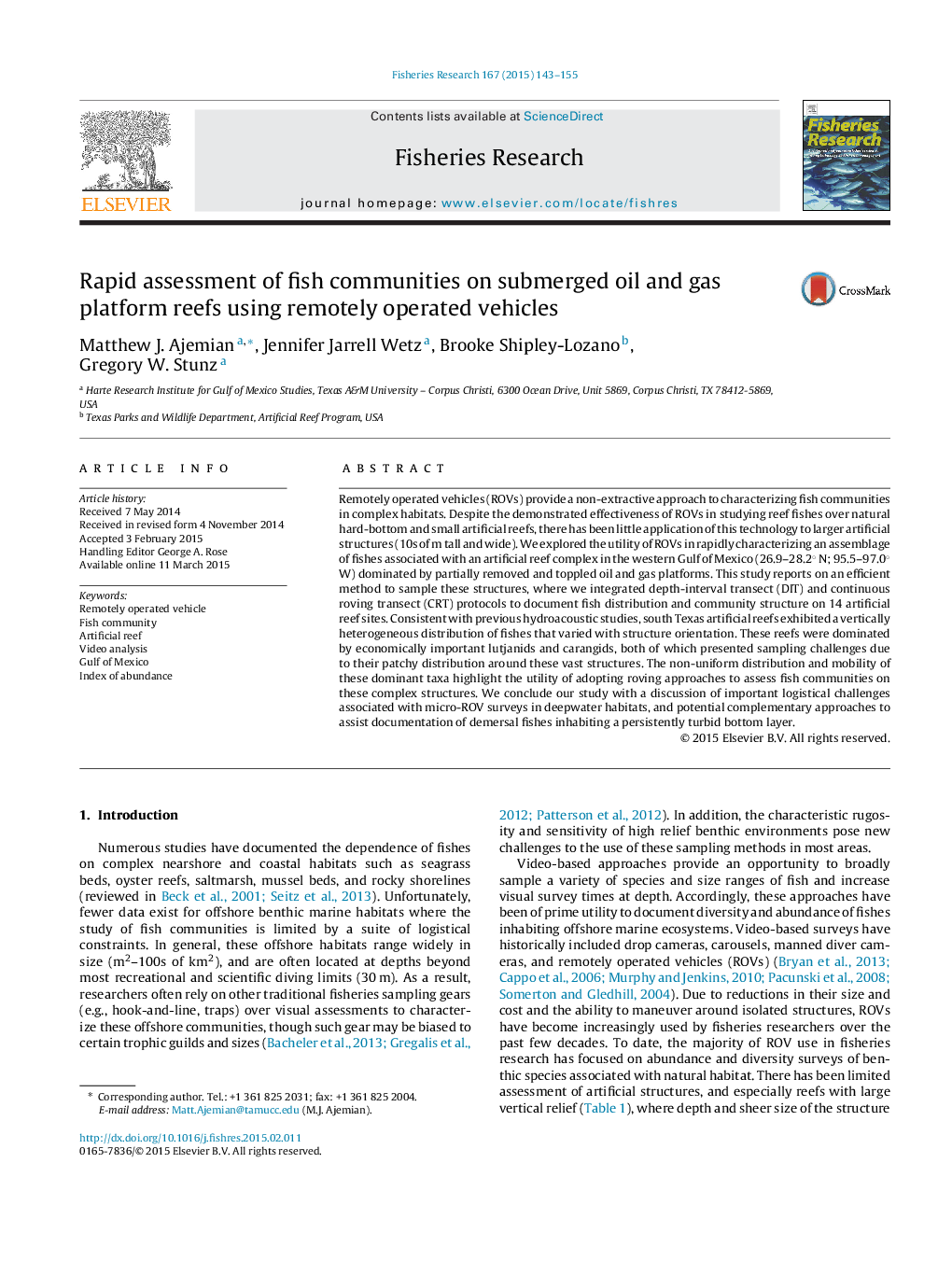| کد مقاله | کد نشریه | سال انتشار | مقاله انگلیسی | نسخه تمام متن |
|---|---|---|---|---|
| 4542900 | 1626801 | 2015 | 13 صفحه PDF | دانلود رایگان |
• Remotely operated vehicles (ROVs) are “low-impact” fisheries assessment tools.
• We tested two ROV survey methods on reefed oil and gas platforms off Texas.
• Roving surveys provided more realistic indices of abundance than interval methods.
• Video data revealed a potential impact of reef orientation on fish distribution.
• Poor bottom visibility on reefed platforms presents multiple logistical challenges.
Remotely operated vehicles (ROVs) provide a non-extractive approach to characterizing fish communities in complex habitats. Despite the demonstrated effectiveness of ROVs in studying reef fishes over natural hard-bottom and small artificial reefs, there has been little application of this technology to larger artificial structures (10s of m tall and wide). We explored the utility of ROVs in rapidly characterizing an assemblage of fishes associated with an artificial reef complex in the western Gulf of Mexico (26.9–28.2° N; 95.5–97.0° W) dominated by partially removed and toppled oil and gas platforms. This study reports on an efficient method to sample these structures, where we integrated depth-interval transect (DIT) and continuous roving transect (CRT) protocols to document fish distribution and community structure on 14 artificial reef sites. Consistent with previous hydroacoustic studies, south Texas artificial reefs exhibited a vertically heterogeneous distribution of fishes that varied with structure orientation. These reefs were dominated by economically important lutjanids and carangids, both of which presented sampling challenges due to their patchy distribution around these vast structures. The non-uniform distribution and mobility of these dominant taxa highlight the utility of adopting roving approaches to assess fish communities on these complex structures. We conclude our study with a discussion of important logistical challenges associated with micro-ROV surveys in deepwater habitats, and potential complementary approaches to assist documentation of demersal fishes inhabiting a persistently turbid bottom layer.
Journal: Fisheries Research - Volume 167, July 2015, Pages 143–155
